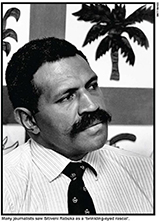Elite sources, journalistic practice and the status quo
REPORTING THE FIJI COUPS
Abstract
In a time of crisis, when there is a signifi cant amount of uncertainty about the means and motivations of those involved, news sources have the ability to determine how an event is represented to an entire society. But who are these sources, and what kinds of institutions do they speak for? Do elite sources dominate the news, and if they do, what is the impact? In the 20th anniversary year of the two Sitiveni Rabuka coups in Fiji, this article takes a mixed methods approach to an investigation of the Australian coverage of the coups in 1987 and 2000. Three Australian broadsheet newspapers—The Australian, The Canberra Times and The Sydney Morning Herald—provide the sample for a content analysis, which focuses on the kinds of sources used in the coup coverage. In particular, it highlights who the sources were and the kinds of institutions they represented. Fifteen journalists who covered the coups in Fiji were interviewed about the experience of covering the coups, including the task of fi nding reliable, credible sources. Their answers are compared with the results of the content analysis in order to gain a broader understanding of how the Fiji coups were covered.
Downloads
Metrics

Copyright (c) 2007 Pacific Journalism Review

This work is licensed under a Creative Commons Attribution-NonCommercial 4.0 International License.















